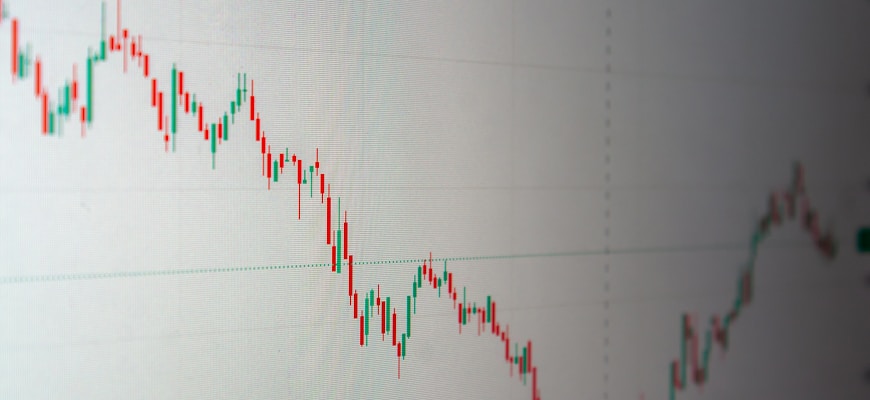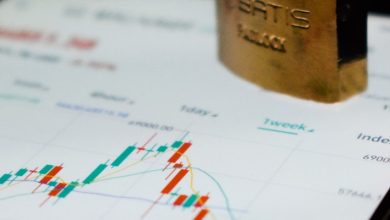Crypto Market Volatility: Analyzing the Latest Price Swings

- Understanding the Factors Contributing to Crypto Market Volatility
- Analyzing the Impact of News and Events on Crypto Price Swings
- Strategies for Mitigating Risk in a Volatile Crypto Market
- Comparing Historical Price Swings to Current Market Trends
- The Role of Market Sentiment in Driving Crypto Price Volatility
- Exploring the Relationship Between Market Liquidity and Price Swings
Understanding the Factors Contributing to Crypto Market Volatility
One of the key factors contributing to the volatility of the crypto market is market demand. The fluctuating demand for cryptocurrencies is influenced by various external factors such as regulatory developments, macroeconomic trends, and investor sentiment.
Another factor that plays a significant role in driving price swings is market speculation. Speculators often buy and sell cryptocurrencies in large volumes based on market rumors, news, and price trends, which can lead to sudden and drastic price movements.
Moreover, the lack of regulation in the crypto market also contributes to its volatility. Without clear guidelines and oversight from regulatory bodies, the market is more susceptible to manipulation and fraud, which can further exacerbate price fluctuations.
Additionally, technological factors such as network congestion, security breaches, and software updates can impact the stability of cryptocurrencies and contribute to market volatility. These technical issues can cause disruptions in trading platforms and lead to rapid price changes.
Overall, it is important for investors to understand the various factors that contribute to crypto market volatility in order to make informed decisions and mitigate risks associated with trading cryptocurrencies. By staying informed and monitoring market developments, investors can better navigate the volatile nature of the crypto market.
Analyzing the Impact of News and Events on Crypto Price Swings
The impact of news and events on crypto price swings is a topic that garners significant attention from investors and analysts alike. It is widely recognized that external factors such as regulatory developments, market sentiment, and macroeconomic indicators can all play a role in influencing the volatility of the crypto market.
One of the key drivers of price swings in the crypto market is news related to regulatory changes. Regulatory announcements from governments and financial institutions can have a significant impact on investor sentiment and confidence in the market. For example, news of a proposed ban on cryptocurrency trading in a major market can lead to a sharp decline in prices as investors react to the uncertainty and potential restrictions.
In addition to regulatory news, market sentiment also plays a crucial role in determining price swings in the crypto market. Positive news such as partnerships with major companies or the launch of new blockchain projects can lead to a surge in prices as investors become more optimistic about the future prospects of a particular coin or token. Conversely, negative news such as security breaches or hacking incidents can lead to a sharp decline in prices as investors lose confidence in the security and stability of the market.
Finally, macroeconomic indicators such as interest rates, inflation, and economic growth can also influence price swings in the crypto market. For example, a rise in inflation or a slowdown in economic growth can lead investors to seek out alternative assets such as cryptocurrencies as a hedge against traditional financial markets. On the other hand, a rise in interest rates or a stronger economy can lead investors to shift their focus away from crypto assets and towards more traditional investment opportunities.
Overall, it is clear that news and events play a crucial role in determining price swings in the crypto market. By staying informed and monitoring key developments, investors can better understand the factors driving volatility and make more informed decisions when buying or selling crypto assets.
Strategies for Mitigating Risk in a Volatile Crypto Market
In order to navigate the unpredictable nature of the crypto market, there are several strategies that investors can implement to mitigate risks and protect their investments. One effective approach is diversification, spreading investments across different cryptocurrencies to minimize the impact of price fluctuations on any single asset. This strategy can help to balance out potential losses with gains from other assets in the portfolio.
Another key tactic is setting stop-loss orders, which automatically sell a cryptocurrency once it reaches a certain price point. This can help prevent significant losses in the event of a sudden price drop. Additionally, conducting thorough research before investing in any cryptocurrency is crucial. Understanding the technology, team, and market trends can provide valuable insights into the potential risks and rewards of a particular asset.
Moreover, staying informed about the latest news and developments in the crypto space is essential for making informed investment decisions. By keeping up to date with market trends, regulatory changes, and other factors that may impact prices, investors can better anticipate and respond to market volatility. Finally, it is important to establish a clear investment strategy and stick to it, regardless of short-term price fluctuations. This can help investors avoid making impulsive decisions based on emotions rather than sound analysis. By following these strategies, investors can better navigate the volatile crypto market and protect their investments in the long run.
Comparing Historical Price Swings to Current Market Trends
One way to gain insights into the current state of the crypto market is by comparing historical price swings to current market trends. By analyzing past fluctuations in prices, investors can better understand the patterns and behaviors that drive the market.
Looking back at historical data, we can see that the crypto market has always been characterized by volatility. Price swings have been a common occurrence, with prices often experiencing rapid and significant fluctuations over short periods of time. This volatility is driven by various factors, including market sentiment, regulatory developments, and technological advancements.
By studying these historical price swings, investors can identify potential opportunities and risks in the current market. For example, if prices are currently exhibiting similar patterns to those seen during a previous bull run, it may indicate that a bullish trend is imminent. Conversely, if prices are mirroring a past market crash, it could be a warning sign to exercise caution.
Overall, comparing historical price swings to current market trends can provide valuable insights into the dynamics of the crypto market. By understanding the patterns and behaviors that have influenced prices in the past, investors can make more informed decisions about their investment strategies in the present.
The Role of Market Sentiment in Driving Crypto Price Volatility
Market sentiment plays a crucial role in driving the volatility of cryptocurrencies. The perception of investors and traders regarding the market conditions significantly impacts the prices of digital assets. Positive sentiment can lead to a buying frenzy, causing prices to surge, while negative sentiment can trigger panic selling, resulting in sharp declines.
Factors such as news events, regulatory developments, and macroeconomic trends can influence market sentiment. For example, positive news about the adoption of cryptocurrencies by a major financial institution can boost investor confidence and drive prices up. Conversely, negative news such as regulatory crackdowns or security breaches can create fear and uncertainty, leading to price drops.
Understanding market sentiment is essential for traders and investors to make informed decisions. By analyzing social media trends, news articles, and market data, market participants can gauge the prevailing sentiment and anticipate potential price movements. Sentiment analysis tools and indicators can help in identifying market sentiment trends and sentiment shifts in real-time.
Exploring the Relationship Between Market Liquidity and Price Swings
One crucial aspect of understanding the recent price swings in the crypto market is examining the relationship between market liquidity and these fluctuations. Market liquidity refers to the ease with which an asset can be bought or sold without causing a significant change in its price. When liquidity is high, there is a large number of buyers and sellers in the market, making it easier to execute trades at stable prices.
On the other hand, when liquidity is low, it can lead to price swings as even a small order to buy or sell can have a significant impact on the market price. This can create volatility in the market, causing prices to fluctuate rapidly and unpredictably. In the crypto market, where liquidity can vary greatly between different assets, understanding this relationship is essential for predicting and managing price swings.
To further explore the connection between market liquidity and price swings in the crypto market, it is important to analyze factors that can affect liquidity levels. These factors include the size of the market, the number of active traders, the availability of trading pairs, and the depth of the order book. By examining these variables, traders and investors can gain insights into how changes in liquidity may influence price movements in the market.
In addition to understanding the impact of liquidity on price swings, it is also crucial to consider external factors that can contribute to market volatility. These factors can include regulatory developments, macroeconomic trends, technological advancements, and market sentiment. By staying informed about these external influences, traders can make more informed decisions and better navigate the volatile nature of the crypto market.
Overall, by exploring the relationship between market liquidity and price swings in the crypto market, traders and investors can gain a deeper understanding of the forces driving volatility. By analyzing liquidity levels, identifying key factors that influence price movements, and staying informed about external developments, market participants can better position themselves to capitalize on opportunities and manage risks in this dynamic and fast-paced market.




